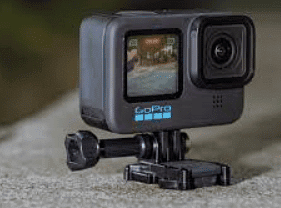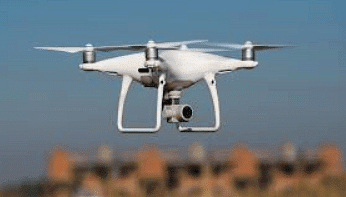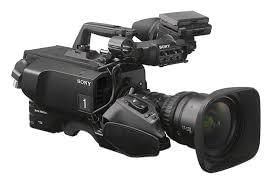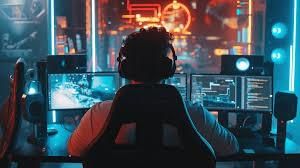Year 6 Exam > Year 6 Notes > Year 6 Computing > Creating digital video and audio
Creating digital video and audio | Year 6 Computing PDF Download
What devices can we use to record digital video and audio?
- We have various devices available to record digital video and audio.
- Everyday devices like smartphones and tablets come equipped with high-quality cameras and audio recorders.
- These devices require no special training to operate, making them user-friendly for capturing and sharing content.
Examples of Devices
- Smartphones and Tablets: These small digital devices are versatile tools for creating and sharing digital images, videos, and audio recordings from any location.

- Action Cameras: Compact cameras specialized for capturing activities like biking, skateboarding, or even pet moments with high quality.

- Drones: Remote-controlled flying devices equipped with high-quality cameras, ideal for capturing aerial views and creating dramatic videos.

- Professional Video Cameras: Used by filmmakers for producing high-quality films, these cameras offer advanced features and capabilities.

Where are the digital video and audio files stored?
- When we create videos or record audio, the files are typically saved on our devices as digital files. It's important to give these files descriptive names for better organization.
- Names like 'File 45' or 'Trip' are not informative and don't indicate the content of the file.
Storage Locations:
- Some devices store files internally in their built-in memory.
- Others save files on removable memory cards that can be easily inserted and removed.
- Smartphones or tablets often connect to the internet and can store files in the cloud.

How big are the files?
- File Sizes:
- Digital Media Storage: Storing digital video and audio recordings requires significant storage space due to the large amount of information they contain.
- Photo Size: A typical digital photo usually consumes about 2 megabytes (MB) of storage space.
- Video Size: Short videos can occupy around 2000MB of space, equivalent to 2 gigabytes (GB) or more.
- Compression:
- Definition: Compression involves reducing the size of a file, enabling it to occupy less space on a storage device.
- Benefits: Compressing files helps in optimizing storage space on your computer or device.
- Video Quality: However, compressing a video often leads to a reduction in quality, resulting in a less clear or sharp appearance.
Question for Creating digital video and audioTry yourself: What is the purpose of compressing digital video and audio files?View Solution
Planning and Shooting a Video
- A storyboard is a sequence of illustrated images or scenes displayed in a chronological order, typically used in film production to visualize the storyline and plan the progress of a movie or video.
- It serves as a visual guide that helps filmmakers, directors, and other team members in understanding how the final product will look.
Key Points about Storyboarding
- Storyboarding involves dividing the narrative into smaller segments or frames to represent each shot or scene of the film.
- Each frame typically includes essential details such as camera angles, character positions, actions, and basic dialogue.
- Storyboarding aids in pre-visualization, allowing filmmakers to plan the sequence of events before actual filming begins.
Sound Recording and Dialogue Scripting
- When recording sound for a film, it's crucial to list down the necessary sound effects or script the dialogue to ensure clarity and coherence.
- Having a script helps in maintaining consistency and allows for better coordination during the filming process.
Handling Mistakes and Bloopers
- Mistakes are a natural part of the filming process. It's important to document errors as they can be used creatively, such as in blooper reels.
- A blooper reel is a collection of outtakes, mistakes, and funny moments from the filming process, often shown at the end of a production as a form of entertainment for the audience.
Post-Production Considerations
- After filming, it's common to review the footage and make necessary edits, including re-recording certain scenes or dialogues if needed.
- Editing allows filmmakers to refine the final product, ensuring a polished and professional outcome for the audience to enjoy.
Editing
- Editing is the crucial stage where all recorded video and audio clips are refined to create a polished final product.
- It involves making changes, corrections, or additions to enhance the content.
- Editing brings together various elements to produce a coherent and engaging film.
- Collaboration within an editing team allows for the sharing of ideas and the guidance of the director.

Importance of Editing in Video Production
- Editing is a collaborative process that plays a pivotal role in shaping the final narrative of a film.
- It allows for refining and enhancing the raw footage captured during filming.
- Editing software provides tools for adding effects, transitions, and fine-tuning the visual and auditory aspects of the video.
Methods of Editing
- When recording video and sound using a digital camera, files need to be transferred to a computer for editing using specialized software.
- For devices like smartphones and tablets, built-in editing apps offer direct editing capabilities on the device itself.
Collaborative Editing Process
- Editing is often a team effort, where multiple individuals contribute their skills and ideas to the project.
- The director typically oversees the editing process, providing guidance and ensuring the film aligns with the creative vision.
Key Considerations in Editing
- Effective editing involves selecting the best footage, arranging sequences, and ensuring a coherent storyline.
- Transitions, sound effects, color correction, and visual enhancements are essential elements of the editing process.
Understanding Video Editing and Timeline
- Timeline in Video Editing:
- Definition: The timeline in video editing software organizes video clips chronologically for editing.
- Importance: It serves as the foundation for building video projects.
- Example: Placing video footage on the timeline initiates project creation.
- Trimming and Editing:
- Definition: Trimming involves removing unnecessary sections from video clips.
- Importance: Enhances video quality by eliminating errors and irrelevant content.
- Example: Removing unwanted portions, known as cuts, refines the final video.
- Sound Editing:
- Process: Sound files are edited alongside video, typically in the lower part of the timeline.
- Importance: Ensures synchronization and quality of audio in the video project.
- Example: Adjusting audio levels or adding background music enhances the viewing experience.
Exporting and Sharing Your Video and Audio
- Exporting Process: After completing your video editing project, you may want to share it with others. To achieve this, you need to export, save, and send the file out of the application or program you used for editing.
- Combining Edits and Effects: When you export your project, all the modifications and effects you have made will be merged and saved into a single finished file.
- File Export Options: Typically, you will have various choices regarding how the file is exported. Smaller file sizes are suitable for sharing on social media platforms over the internet, albeit with lower quality. Conversely, larger files ensure higher quality and are ideal for viewing on large screens like TVs.
Question for Creating digital video and audioTry yourself: What is the purpose of storyboarding in film production?View Solution
The document Creating digital video and audio | Year 6 Computing is a part of the Year 6 Course Year 6 Computing.
All you need of Year 6 at this link: Year 6
|
19 videos|26 docs|3 tests
|
FAQs on Creating digital video and audio - Year 6 Computing
| 1. What are some examples of devices used for editing digital video and sound? |  |
Ans. Some examples of devices used for editing digital video and sound include computers, laptops, smartphones, tablets, digital cameras, microphones, and audio interfaces.
| 2. How can digital video and sound be edited using these devices? |  |
Ans. Digital video and sound can be edited using software applications such as Adobe Premiere Pro, Final Cut Pro, Pro Tools, Audacity, and GarageBand, which allow users to manipulate and enhance the quality of their media files.
| 3. What are some common features of editing software for digital video and sound? |  |
Ans. Common features of editing software for digital video and sound include timeline editing, audio mixing, special effects, transitions, color correction, and audio enhancement tools.
| 4. How can students benefit from learning how to edit digital video and sound in schools? |  |
Ans. Learning how to edit digital video and sound in schools can help students develop important skills such as creativity, problem-solving, teamwork, and communication, which are valuable in various industries such as filmmaking, advertising, and multimedia production.
| 5. What are some resources available for students to learn more about editing digital video and sound? |  |
Ans. Students can access online tutorials, courses, workshops, and books to further enhance their knowledge and skills in editing digital video and sound. Additionally, schools may provide access to specialized equipment and software for hands-on learning experiences.
Related Searches















